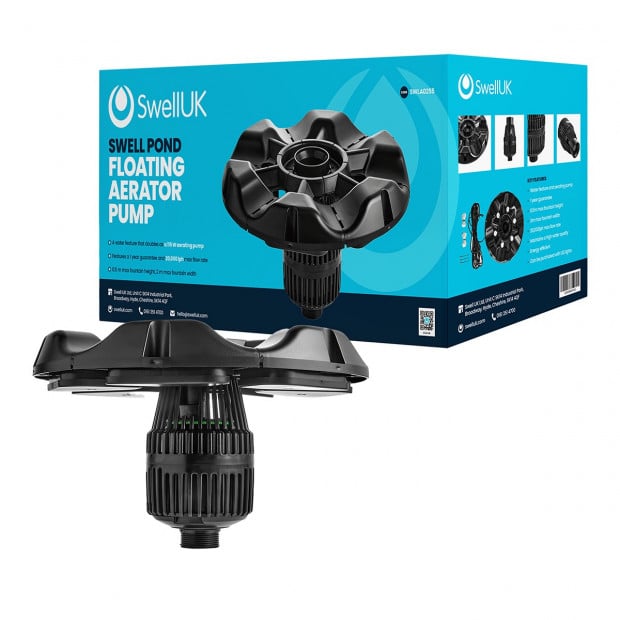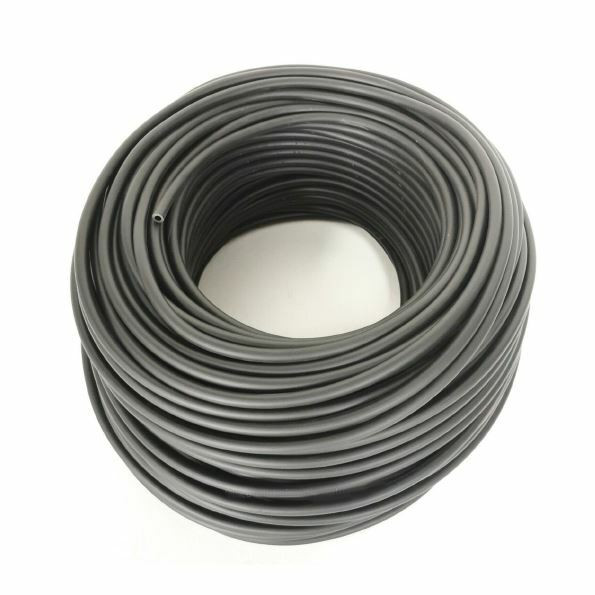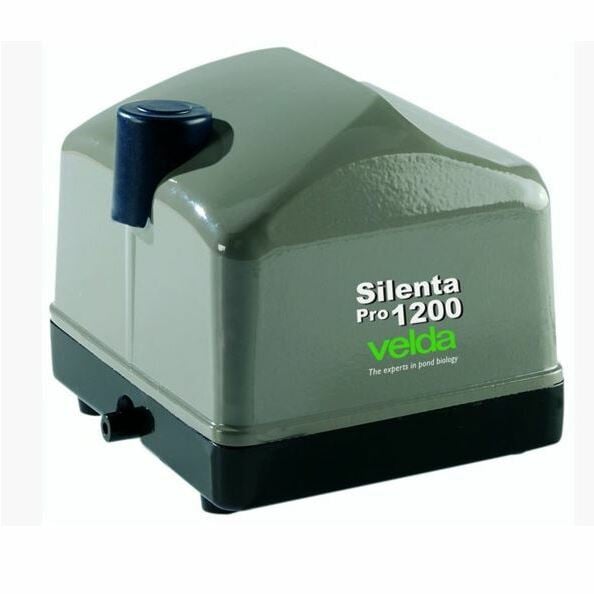At Swell UK, we offer a range of reliable and energy efficient pond air pumps from top brands including Blagdon, Evolution Aqua, Hozelock, Oase, and our own high quality Swell range. From small wildlife to large Koi ponds, our air pumps greatly increase oxygen levels, boosting fish health and maintaining essential water movement year round. We also stock all the accessories you'll need to build the perfect aeration setup for your pond.
Pond Air Pumps and Accessories
Help and advice on shopping for: Pond Air Pumps and Accessories
Why do I need an air pump for my garden pond?
Fish need oxygen to survive and absorb it from the water. Often oxygen levels are reduced due to warm weather, blanketweed, waste build up, and even medication. A pond air pump is the solution, pushing air through an airline into an airstone or diffuser, creating fine bubbles in the pond that increases oxygen transfer. Oxygen transfer from an air pump keeps your water healthy, clear, and well circulated.
Air pumps are essential for:
- Ponds with fish (especially Koi or heavily stocked ponds)
- Summer months when oxygen levels naturally drop
- Winter months to prevent stagnation
- Ponds with filters that benefit from extra circulation
What to look for when choosing an air pump
- Flow rate: more fish means you'll need a higher flow rate
- Number of outlets: if you're running multiple air stones or filters, you'll need more outlets
- Energy efficiency: air pumps typically run constantly, so it's worth considering your energy usage
- Noise level: higher-quality pumps are typically quieter
- Weatherproofing: our outdoor pumps can be used outdoors safely year-round
- Accessories: airline, manifolds, and air stones may be required, depending on your setup
Why choose Swell UK?
At Swell UK we provide:
- Lowest price guarantee: get the best prices on leading brands (see T&Cs)
- Next-day delivery: fast shipping right to your door
- Extensive range of air pumps and accessories: including airline, diffusers, stones, valves, and manifolds
- Expert support: our team of pond specialists can help you find the perfect pump and accessories for your pond
Frequently Asked Questions
What size air pump do I need for my pond?
We advise to match the air pump output to your pond size, depth, and fish load. Large or Koi ponds benefit from higher flow rates. If you're unsure, choose a more powerful model, as under aerating is worse than over aerating.
Do I need an air pump if I have a pond pump or waterfall?
While waterfalls add some oxygen, they cannot provide consistent aeration, especially during warm weather or when oxygen levels drop at night. Pond pumps work alongside air pumps, while they provide movement, they don't provide the level of aeration that air pumps do.
Can I run an air pump all year?
Yes, it's even recommended to. Oxygen in the water during summer is lower, and ice may seal the pond in winter, so consistent water movement is highly beneficial.
Where should I place my air stones?
Air stones and diffusers should be placed at different depths for the best circulation. In winter, we advise against placing them at the very bottom, as it may chill the pond.
Are accessories included with pumps?
Some pumps include airline and air stones, but may require accessories to be purchased separately. Check product specifications before purchasing.
Ready to oxygenate your pond?
Browse our full selection of pond air pumps and accessories, from pumps for wildlife ponds to powerful units for Koi ponds and professional filtration systems.


















